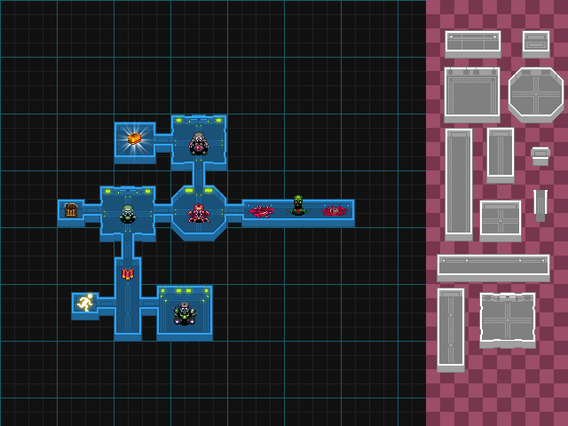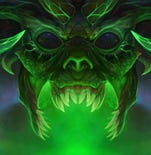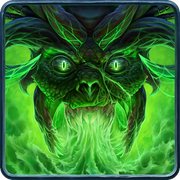
Featured Blog | This community-written post highlights the best of what the game industry has to offer. Read more like it on the Game Developer Blogs or learn how to Submit Your Own Blog Post
Developer Diaries: the story behind Dead Shell
Dead Shell is the mobile indie roguelike and this is the development story of it.

Negatone is a small team from Ulyanovsk, Russia, that consists of only two persons: Anton Paramonov, artist, and Alexander Lomakin, programmer.
Anton was keen to make a retro game for a long time: he drew sketches, had dreams, tried to find a kindred spirit. At last he found him in a former colleague, Alexander. Alex likes Doom, retro shooters, and roguelikes too.
The very first prototype was a combat action game built of SMS display-like blocks, and was called Dead Shell: Message Roguelike. The main question that Anton and Alex had in their minds when they were designing the game was, “What would an RPG for the lazy look like?” Their idea was as follows: a mobile RPG must not make the player do anything boring, and all integral components must be on one screen, only requiring the player to tap the right spot. It’s unlikely the user will want to read a lot of text. Beautiful panels with action icons, something like banners, on the other hand... The main goal was to make the game fast and easy to grasp. The guys decided to display those action panels in turns, to avoid cluttering up the whole screen.
.png/?width=574&auto=webp&quality=80&disable=upscale)
The first prototype of the game Dead Shell
After improving and simplifying the design, they came up with the following version:
.png/?width=578&auto=webp&quality=80&disable=upscale)
The second prototype of the game Dead Shell
In about two weeks, the two of them made the following prototype with gameplay elements:
They brought it to us, HeroCraft, to have it published. Our board of experts liked the game, and after some time communicating with Anton and Alex, we decided to develop Dead Shell further. Alex found an intriguing algorithm for introducing a procedurally generated maze on game dev forums and implemented it in the game in roughly two weeks.

An early version of the game Dead Shell

An early version of the game Dead Shell
Pixel art was selected as the game’s visual style, because one of the two authors is its avid fan while the other likes old school games. When we suggested that the maze needs to be more beautiful, Anton took it on himself to redo all of the graphics. He worked on it until the game started to look like it does now. In the earliest stages of development, it was old school art in the style of DOS games, which was not bad in itself, but the final iteration features more modernized graphics with stronger visual appeal.

By the way, since I’ve touched on the subject of visual style, I would like to tell you about the game’s icon. Originally it looked like this:

A few sketches of a new icon were made, inspired by the original icon and Lost Soul from Doom, and one of our artists brought it to life.
![]()
References for the icon
![]()
Sketch of the icon



Icon drawing stages

The final version of the icon
The guys gradually had to abandon some features to simplify gameplay and prevent the player from being distracted in the process of exterminating the undead. Furthermore, they had no game designer, so Alex and Anton designed the game themselves, following our advice.
The game spent roughly a year soft-launched on Google Play, which was a difficult period for all of us: Alex was on the edge of despair, Anton began to lose faith in a bright future, and we tried to support their morale the best we could. We studied the statistics in all stages of the soft launch: people liked the game, but they would quit playing rather quickly, with the ARPU and the 7th day retention rate being low. We needed to add something to the game that would keep players around long-term.
We continued to work on the game, performed a lot of experiments, and one of the suggested ideas was to add chest drops to the game to keep the player interested longer. They operated similar to the gacha mechanic, and you could get new mercenaries, weapons, and in-game resources from them. These changes helped double the ARPU and the 7th day retention rate. Our next successful decision was a staged global map that allowed us to introduce content gradually. This helped double the ARPU and the 7th day retention rate again.
And finally, in the summer of 2016, the game was fully released on iOS and Android.
About the Plans
Frankly speaking, Alex and Anton did not expect people to play Dead Shell for months on end: players are already starting to eat up the content, so the guys and we are planning to release a content update with new things to farm, a campaign mode, and improved leveling. We hope that this update will significantly prolong the game’s life.
What’s more, we are now looking forward to its launch on Steam. HeroCraft will also work on the PC version. Needless to say, the mobile game’s adaptation for the PC is a serious matter, but we believe that the Steam audience will see the true value of Dead Shell.
Read more about:
Featured BlogsAbout the Author(s)
You May Also Like







.jpeg?width=700&auto=webp&quality=80&disable=upscale)








